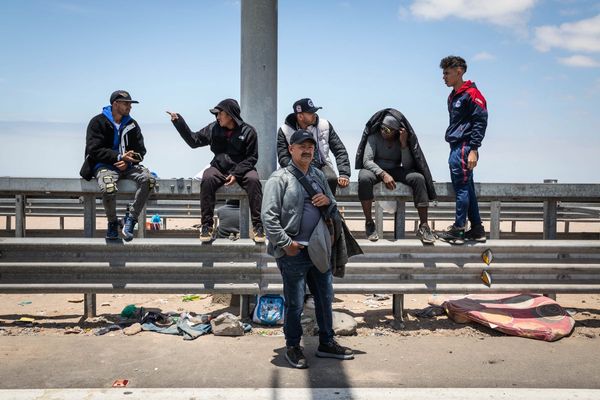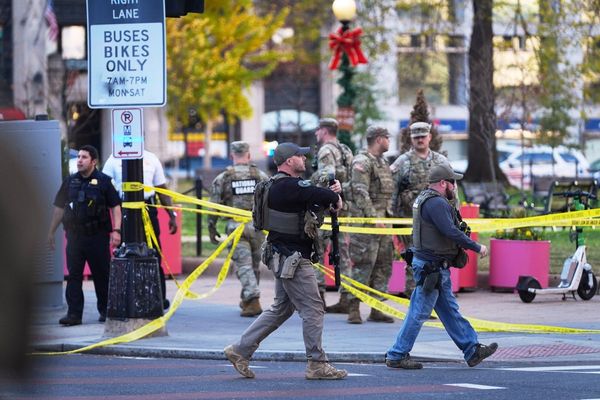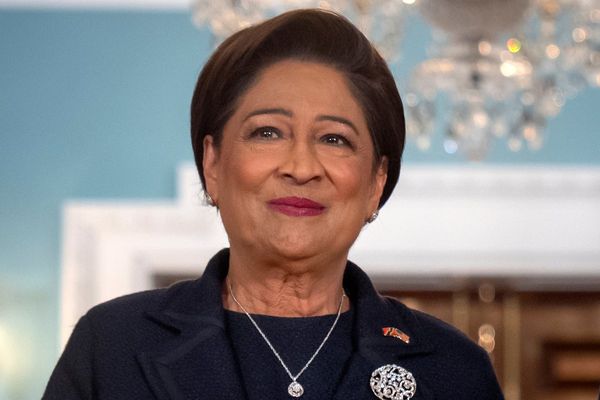
When Starbucks founder Howard Schultz appears before U.S. Sen. Bernie Sanders’ Senate Committee on Health, Education, Labor and Pensions on Wednesday, he can expect a grilling. Sanders has long had Schultz in his sights. The man who built Starbucks into a global coffee chain has fiercely resisted his workers’ efforts to unionize.
The hearing will be a faceoff between two high-profile leaders who have positioned themselves as champions of workers, said Steven Greenhouse, a longtime labor reporter who is now a senior fellow at the Century Foundation. But Schultz’s image as a kinder, gentler capitalist has been tarnished by hundreds of labor violations and an anti-union campaign that has drawn rebuke from the National Labor Relations Board, as well as some of Starbucks’ own investors. “Bernie will bring much more attention to his charges that Starbucks and Schultz are engaged in illegal and egregious union busting,” Greenhouse said. The bully pulpit effect of the hearing “will turn up the heat on Starbucks because Bernie has such a big following, especially among young Americans,” Greenhouse said.
Schultz’s departure as CEO, two weeks earlier than expected, could have public relations benefits for Starbucks, giving the impression “that it is turning a new page, even if that new page turns out to be the same as the page that was just turned,” said Greenhouse. Laxman Narasimhan, a former chief executive officer of Reckitt, a multinational consumer goods company, took the reins from Schultz last week.
That Schultz is being called before the committee Sanders chairs next week is a testament to the surprising power of a youth-led national organizing campaign that first took root less than 18 months ago at a group of stores in Buffalo, New York. Those workers — or “partners” in Starbucks parlance — see this as a moment of accountability for Schultz and Starbucks.
“A lot of partners are really excited,” said Josie Serrano, a Starbucks barista. On a Saturday in March, the Long Beach store where they work was abuzz with talk of the hearing. “We had a partner from a nonunion store who was so excited to work a shift with us because she wants to talk to us about everything that’s been going on. She would love her store to be unionized,” Serrano said.
Despite that enthusiasm, truly holding Starbucks accountable for the unfair labor practice charges covering hundreds of allegations in dozens of states presents challenges. Labor law is so “weak” and “broken,” according to Benjamin Sachs, professor of labor and industry at Harvard Law School, that “even the best NLRB is fairly hamstrung in what they can do.
“We need a better stronger set of labor laws if we want to protect workers’ rights to unionize and maybe this hearing will highlight that fact,” he added.
The NLRB has brought a complaint asserting that Starbucks has illegally discriminated against union members by failing to offer them the same benefits as nonunion workers.
Meanwhile, Sanders and his fellow committee members will have much to discuss with Schultz. Early this month, an NLRB administrative law judge issued a hefty 218-page decision in which he ruled that Starbucks had violated the National Labor Relations Act hundreds of time through “egregious and widespread misconduct demonstrating a general disregard for the employees’ fundamental rights” in the Buffalo area alone. Nationally, Starbucks Workers United, which represents most Starbucks workers who have unionized, has accused the company of illegally firing more than 200 workers because of their involvement in organizing for a union.
The firings have had a chilling impact, said Tyler Keeling, a barista who has worked for seven years at Starbucks. The campaign in Buffalo inspired him to begin organizing a union at his Lakewood, California store, which held an election last May. When calling workers interested in organizing, “I haven’t had a call where one of their questions hasn’t been, will I get fired?” said Keeling.
Still, Starbucks’ most effective anti-union strategy is not the firings or store closings that the union charges have also come in retaliation for organizing. Greenhouse argued in The Guardian that it has been the company’s decision to give raises and new benefits to its nonunion workers while withholding them from its unionized employees. For its part, Starbucks has said that the company is prohibited from offering benefits to its unionized workers without engaging in collective bargaining, and that the store closures have come in response to safety concerns at those locations. The NLRB has brought a complaint asserting that Starbucks has illegally discriminated against union members by failing to offer them the same benefits as nonunion workers.
Rachel Wall, director of corporate communications for Starbucks, said the company has “been clear [that] all partners have a right to make their voice heard when it comes to union issues, and we do train managers that no partner can be disciplined or threatened with discipline for engaging in lawful union activity.”
Wall said Starbucks plans to “consider all options to obtain further legal review” of the administrative law judge’s March ruling, which requires the reinstatement of seven Buffalo-area workers. The judge determined those workers had been fired in retaliation for organizing, and he awarded back pay and damages to more than two dozen others whom the judge concluded had suffered retaliation. “The remedies that were ordered are just inappropriate given the record in this matter,” Wall said. Those fired “were separated following clear violations” of Starbucks policies and “not related to, or in retaliation for, any protected concerted activities, as the decision contends,” Wall wrote in an email. Starbucks has accused the NLRB of coordinating with the union to improperly influence the outcome of a union election. House Republicans have supported Starbucks by initiating a probe into the matter.
“We don’t really have a living wage. We have benefits that are really hard to obtain, and they’re not accessible to a lot of people.”~ Josie Serrano, Starbucks barista
Schultz, who came out of retirement in March 2022 to serve as interim CEO, has reportedly taken the unionization campaign personally. When asked by New York Times reporter Andrew Ross Sorkin last June if he would ever embrace the union, he answered with a simple no, prompting an unfair labor practice charge from Starbucks Workers United.
Schultz was nominated on Thursday to sit on the Starbucks board of directors. Now that he is no longer CEO, it’s unclear what role he will play in steering the company’s response to the unionization effort. At a November 2021 meeting in Buffalo, before he had returned to the company, stores closed so that workers could listen to Schultz deliver a speech to Starbucks employees. “These workers were forced to attend this meeting while every Buffalo-area store was closed to listen to Mr. Schultz one month prior to union elections that were held in the area,” Sanders wrote in a letter to Starbucks’ general counsel in early March. That meeting, Sanders wrote, “makes clear the enormous power and influence Mr. Schultz has over labor policy at Starbucks even when he is not the official CEO of the company.” Sanders penned his letter after Schultz initially refused his invitation to appear before the HELP committee. Schultz changed his mind after Sanders said he would hold a committee vote to subpoena Schultz.
At the Buffalo address to workers in November, Schultz held Starbucks up as a model employer willing to buck conventional corporate wisdom by providing health coverage to part-time employees, stock options and free tuition to online college. The speech was punctuated with a refrain that was a window into his philosophy on unions: “Who forced us to that? Pushed us to do it? No one. We did it because we thought it was the right thing.”
At Starbucks board meetings, two empty chairs are placed at the table, one symbolically representing customers, the other workers. The empty chairs were Schultz’s idea. Some employees say they want a real seat at the table. They say they face an increasingly grueling work environment, harassment from customers and difficulty cobbling together enough hours to qualify for health benefits. “We don’t really have a living wage. We have benefits that are really hard to obtain, and they’re not accessible to a lot of people. And we also just have scheduling that is so inconsistent that we just never have the hours that we really need to even get those benefits or even just to pay our bills,” Serrano said.
Serrano is hopeful that the new CEO will bargain in good faith with the union, and make Starbucks a better workplace. Serrano, like Keeling, has attended bargaining sessions only to have Starbucks representatives leave after just a few minutes — a pattern that has been repeated around the country. Starbucks has objected to having union members attend bargaining sessions via Zoom, charging that those sessions are being recorded. The union and Starbucks have filed unfair labor practices charges against one another over the claims. No union stores have signed contracts with the company.
“A lot of us are excited to see Howard Schultz answer to these injustices,” Serrano said. At the same time, they said, “We want to work with Starbucks.” Serrano said that if Starbucks stopped “acting in bad faith,” the two sides might reach an agreement “that would not just benefit us but would, in the end, benefit the company.”







